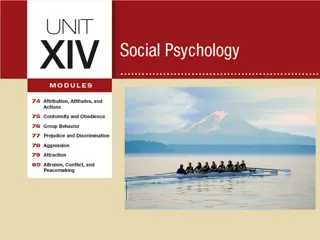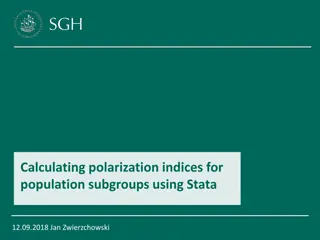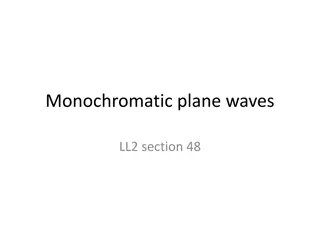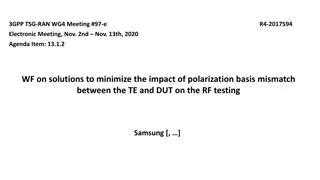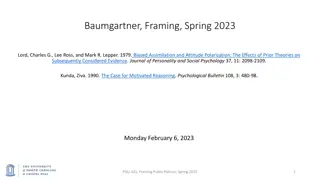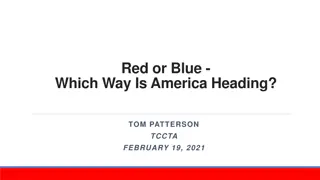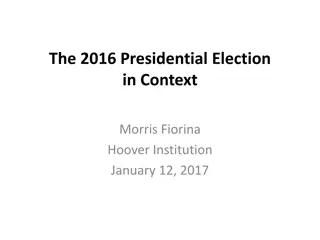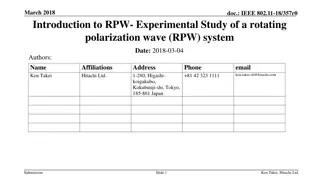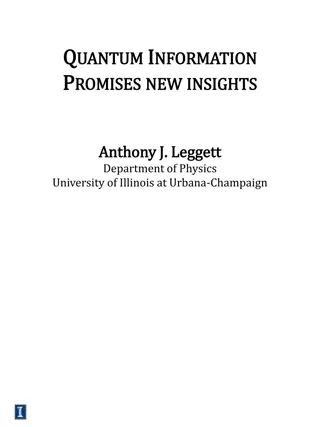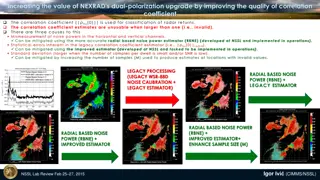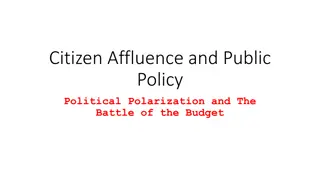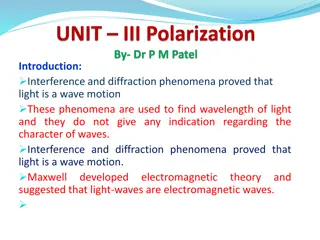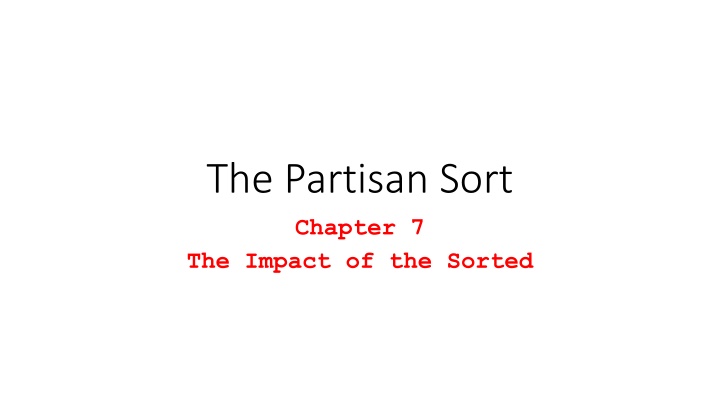
Impact of Sorted Electorate on Polarization Trends
Explore the impact of increased sorting among voters on political polarization levels in the electorate. While sorting has greatly improved alignment with parties, polarization has only slightly increased, with a notable shift towards party-driven sorting over ideology-driven sorting. The data from the 1992-94-96 panels sheds light on how sorting influences voter behavior and affects party affiliations and issue positions.
Uploaded on | 0 Views
Download Presentation

Please find below an Image/Link to download the presentation.
The content on the website is provided AS IS for your information and personal use only. It may not be sold, licensed, or shared on other websites without obtaining consent from the author. If you encounter any issues during the download, it is possible that the publisher has removed the file from their server.
You are allowed to download the files provided on this website for personal or commercial use, subject to the condition that they are used lawfully. All files are the property of their respective owners.
The content on the website is provided AS IS for your information and personal use only. It may not be sold, licensed, or shared on other websites without obtaining consent from the author.
E N D
Presentation Transcript
The Partisan Sort Chapter 7 The Impact of the Sorted
Although there has been a large increase in sorting, there has been only a modest increase in polarization. So while the electorate is much better sorted today than it was a generation ago, it is only slightly more polarized, and much of that increased polarization is a direct result of sorting (p.120). That is: Party-Driven Sorting > Ideological-Driven Sorting.
Table 7.1 1992-94-96 Panel If people are sorting this should result in a voter: 1)Being more likely to support their party s Presidential candidate; and 2)Less Split Ticket Voting
Table 7.2 1992-94-96 Panel Affective Polarization: If people are sorting this should result in a voter giving a higher feeling thermometer rating to her party relative to the opposite party.
Table 7.3 1992-94-96 Panel Constraint (Converse, 1964): If people are sorting this should result in a voter adopting the issue positions of her Party.

